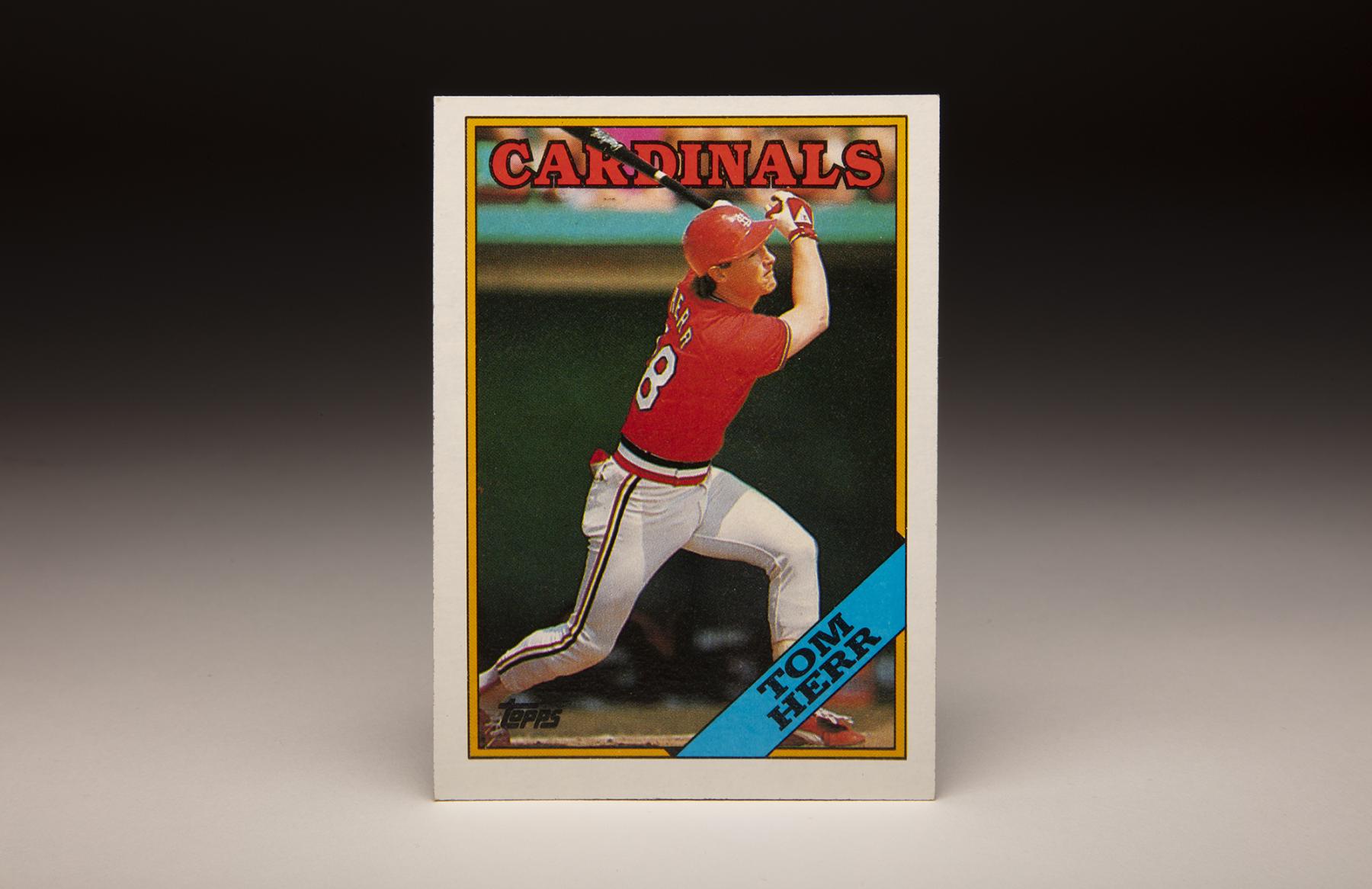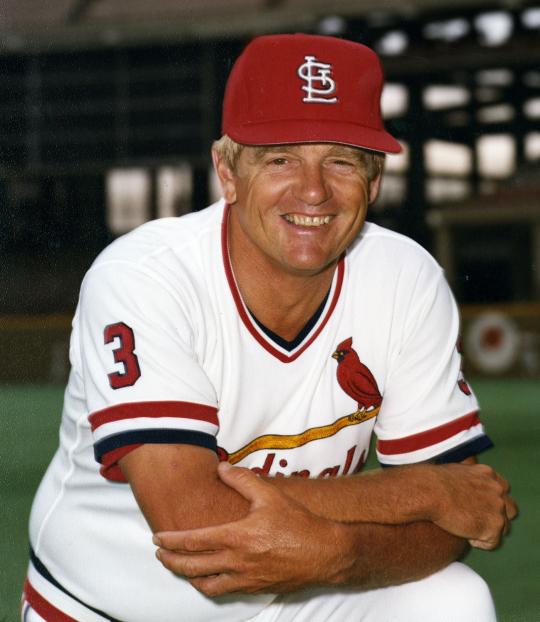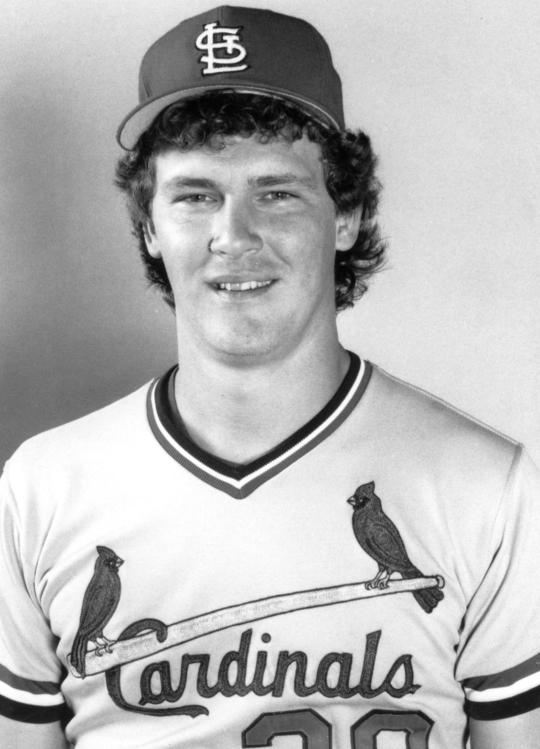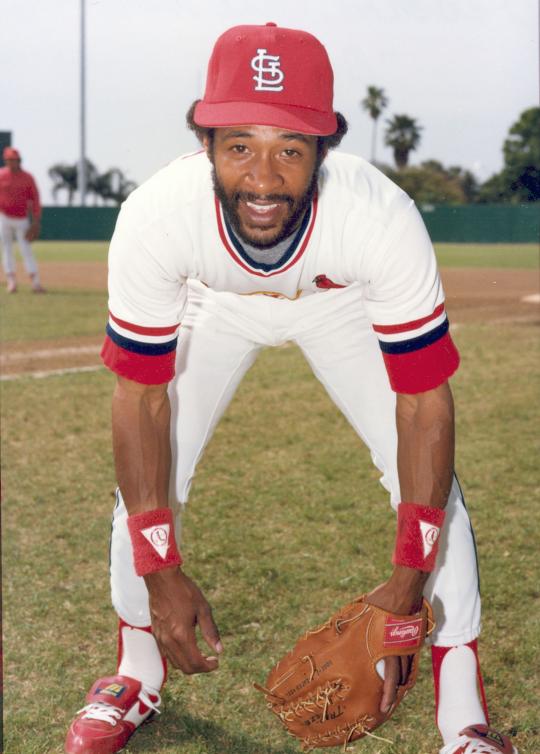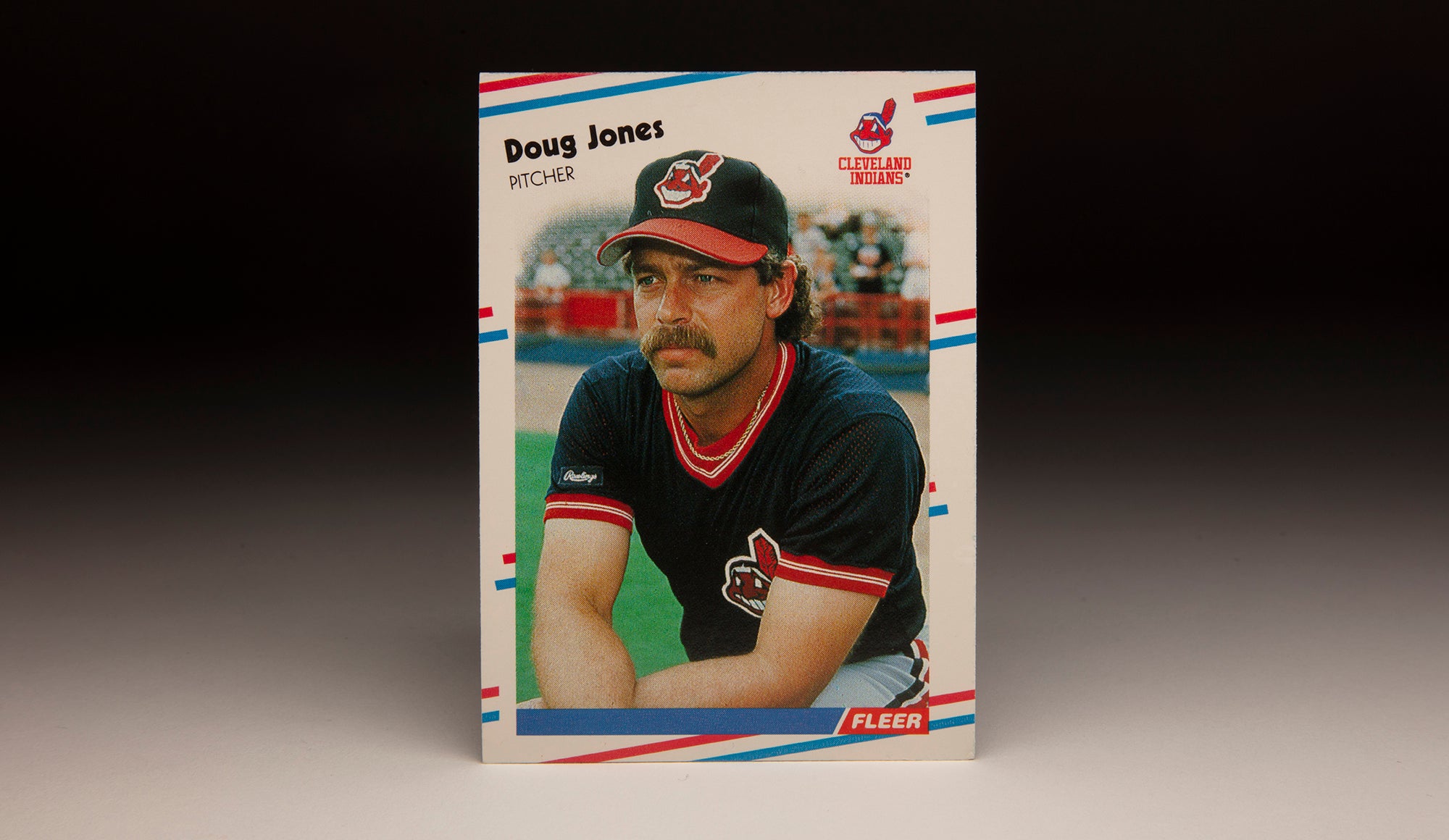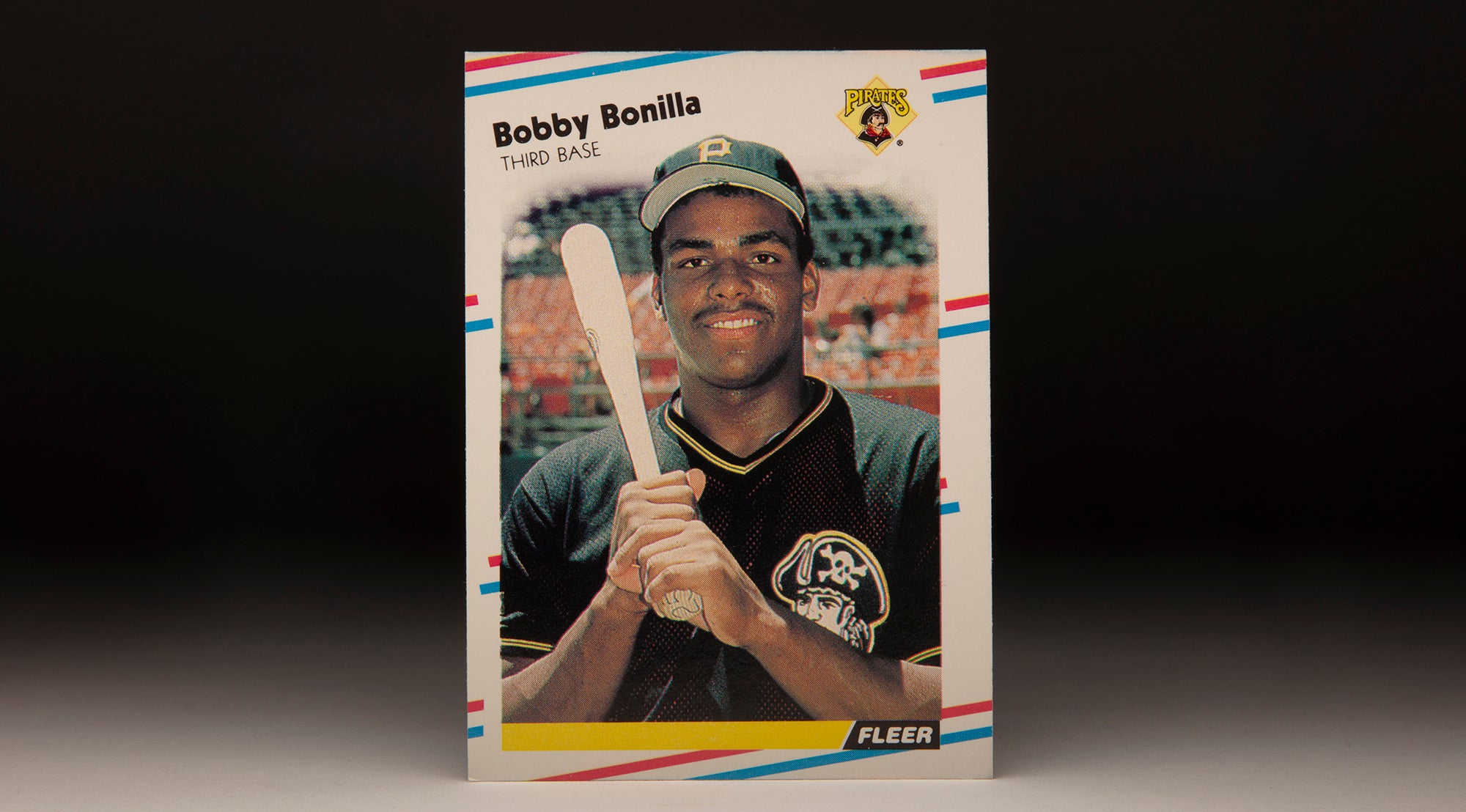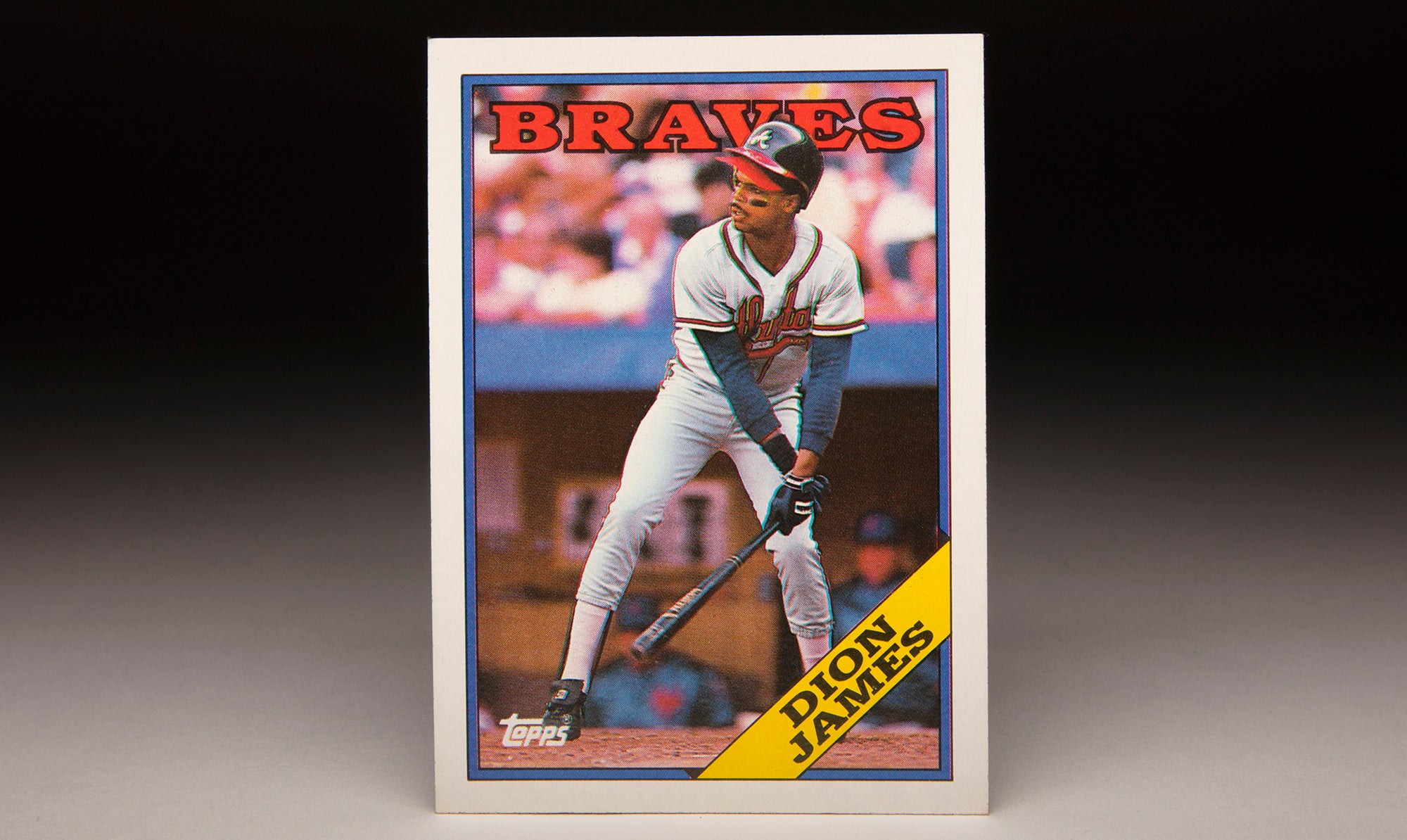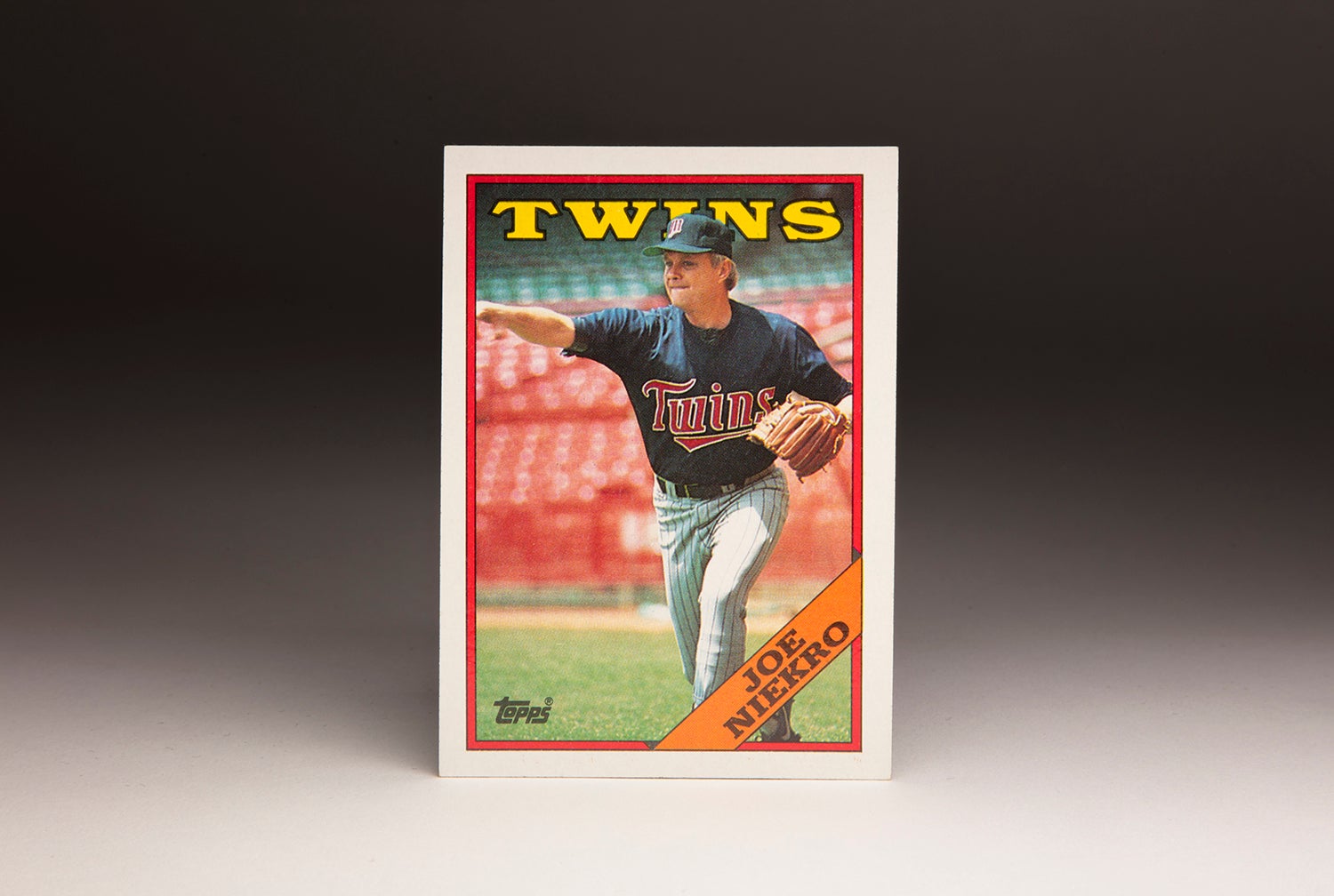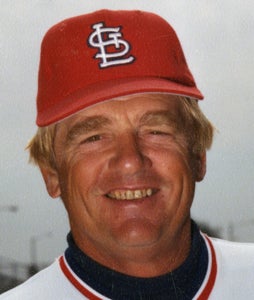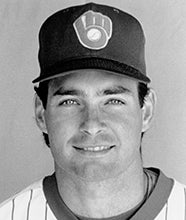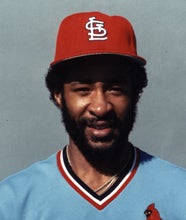- Home
- Our Stories
- #CardCorner: 1988 Topps Tom Herr
#CardCorner: 1988 Topps Tom Herr
The 1985 St. Louis Cardinals fielded an everyday lineup that featured some of the most prolific baserunners of the era.
Tom Herr, who began his big league career with 1,160 at-bats without a home run, turned that speed into runs batted in like few hitters ever had.
Born April 4, 1956 in Lancaster, Pa., Herr starred on the basketball court for Hempfield High School in Lancaster but also excelled in football, baseball and track. He accepted a basketball scholarship to Duke University, going undrafted by all 24 MLB clubs in 1974 despite excelling on the diamond in high school and for his local American Legion team, which finished third in the Pennsylvania state tournament that year.
But when Bill Foster replaced Neill McGeachy as the Duke basketball coach, all of McGeachy’s scholarship offers were voided. The Cardinals, however, kept tabs on Herr and signed him as an amateur free agent.
In 1975, Herr made his pro debut with the Johnson City Cardinals of the Appalachian League, hitting .308 in 42 games.
Official Hall of Fame Merchandise
Hall of Fame Members receive 10% off and FREE standard shipping on all Hall of Fame online store purchases.
“I had better high school hitters,” Hempfield High School coach Harry Wirth told the Lancaster New Era. “I had boys with better arms and guys who probably were faster. But I never had anybody who put it all together in one package and also had so much in the way of baseball aptitude.”
Herr spent the 1976 and 1977 seasons with St. Petersburg of the Class A Florida State League, hitting .303 with 50 stolen bases – the top total in the FSL – in the latter campaign. He began the 1978 season with Double-A Arkansas and was promoted to Triple-A Springfield late in the year, finishing the season with a .290 batting average and 33 steals over both levels.
After getting a look-see by the big league club in Spring Training in 1979 – his second straight season where he was invited to the major league camp – Herr hit .293 with 29 steals back at Triple-A. He debuted in the big leagues on Aug. 13, 1979, after Cardinals starting second baseman Mike Tyson was injured. Herr appeared in 14 games down the stretch, coming to the plate just 12 times and recording two hits.
Then in 1980, Herr made the Cardinals’ Opening Day roster as a reserve infielder after Tyson was traded to the Cubs in the offseason. He served as a backup to Ken Oberkfell at second base but was hitting just .163 when he was sent back to Triple-A on June 28.
But after hitting .312 in 37 games for Springfield, Herr was recalled to St. Louis and batted .337 from Sept. 6 through season’s end, finishing with a .248 mark in 76 games with St. Louis.
Whitey Herzog, who took over as Cardinals manager midway through the 1980 campaign, moved Oberkfell to third base in 1981 and made Herr his Opening Day second baseman despite the fact that Herr hit only .206 in Spring Training.
“He hit the ball well all spring,” Herzog told the Lancaster New Era, “and didn’t have any luck.”
After going 0-for-10 in the Cardinals first three regular season games, Herr settled in and became one of the team’s most consistent hitters. He played in each of St. Louis’ 103 games in that strike-shortened season, batting .268 while committing just five errors, leading the league in fielding percentage (.992) and assists (374) among second basemen. The Cardinals’ 59 wins were more than any other National League East team, but St. Louis finished second in both the first half and second half of the split season, falling short of a playoff berth.
Herr, meanwhile, finished in a tie for 22nd in the NL Most Valuable Player voting.
“All he expects for you is to give 100 percent,” Herr said of Herzog. “When you play for a guy like that, and know how much he’s into the game and what a good manager he is as far as seeing things before they happen, you can’t help but go out and play hard for him.”
In 1982, Herr suffered from a bout of pneumonia in April and pulled a thigh muscle in May. But he began to heat up with the weather and finished the year with a .266 batting average and 83 runs scored in 135 games as the Cardinals won the NL East. Herr had three hits in St. Louis’ sweep of the Braves in the NLCS before driving in five runs in the World Series, including a key RBI double in Game 2 that helped the Cardinals rally from a 3-0 deficit – after they had been blanked by the Brewers 10-0 in Game 1 – to win 5-4.
Herr also set a record when he recorded two RBI on one sacrifice fly in Game 4 when Milwaukee’s Gorman Thomas stumbled while fielding Herr’s long second-inning drive, allowing Willie McGee and Ozzie Smith to score on the play.
The Cardinals won the World Series in seven games.
“When I realize I was part of a championship team,” Herr told the New Era, “and had what it took to contribute to a winning situation under enormous pressure, that’s very gratifying.”
Herr had arthroscopic knee surgery following the season, setting the stage for an injury-plagued 1983. Herr was leading the NL with a .323 batting average on Aug. 6, 1983, before missing the Cardinals’ final 54 games that year due to ongoing knee problems. He would endure three different procedures on his left knee that year.
The 1983 season did, however, feature Herr’s first big league home run. It came off the Giants’ Andy McGaffigan in his 1,161st at-bat on May 10.
“Now the pressure’s really on,” the Giants’ Duane Kuiper, who at that point had one homer in 3,069 big league at-bats and would finish his career with one homer in 3,379 ABs, told the San Francisco Examiner. “They’ll expect him to hit another one.”
Eight days later, Herr would homer again off Houston’s Bill Dawley.
A natural right-handed hitter, the switch-hitting Herr was remarkably consistent from both sides of the plate throughout his career – hitting .271 from the left side and .272 from the right. Sixteen of his 28 career homers came as a lefty batter.
But it was as a fielder where Herr made the biggest impression for most of his career. Teaming with shortstop Ozzie Smith for six seasons as the Cardinals’ double play combination, Herr earned a reputation as one of the game’s steadiest infielders.
He committed more than nine errors in only one of his 13 big league seasons and finished his career with a .989 fielding percentage that still ranks in the Top 15 all-time.
“He was probably the best of the 40 second basemen that I’ve played with,” Smith said toward the end of his Hall of Fame career. “Tommy and I never really had to work a lot together because the chemistry out there on the field was great.
“I knew where he was, he knew where I was and it worked.”
A side muscle pull slowed Herr in 1984, but he still hit .276 in 145 games. Then in 1985, Herr changed his approach at the plate – moving up in the box, which straightened out many hard-hit balls that were landing in foul territory. Herr began the season with eight hits in his first 17 at-bats, hitting third in a lineup that would eventually feature speedsters Vince Coleman and Willie McGee in the first two spots.
“That’s the best I’ve ever felt at the plate,” Herr said of his first three months of the 1985 season that saw him total 68 RBI by the All-Star break, earning a starting job in the All-Star Game. “I was so confident I was thinking about possibly making a run at .400.”
Herr was also able to relax at the plate thanks to a new four-year, $3 million contract he signed prior to the 1985 campaign.
Herr cooled off at the season went on, but with Coleman, McGee and Smith putting constant pressure on opposing defenses, Herr saw plenty of fastballs as catchers tried to slow down the Cardinals’ running game.
“I feel like I’ve been hitting the ball good,” Herr told the Lancaster New Era following the strike after a 29-for-120 stretch that saw his batting average drop from .347 to .315. “Not as hard as often as I was earlier, but I’m still getting some good hacks.”
Herr, who was the Cardinals’ player representative that season, was mentally fatigued by the labor negotiations, which resulted in a two-day work stoppage Aug. 6-7 before the issue was resolved.
“I went 1-for-14 the three days before the strike,” Herr told the New Era. “As a player rep, I had a lot of outside things on my mind, especially the week before the strike deadline. I felt I was so weighed down by that I wasn’t preparing myself as usual for games, and mentally I was really under a strain. I was swinging at bad pitches.”
But after the dispute was resolved, Herr reeled off a nine-game hitting streak as he finished August with a .323 batting average, the same mark he was at on July 31. A late-season slump dropped his average to .302, but Herr recorded his 100th RBI of the season on Sept. 19 and scored the go-ahead run in the Cardinals 7-1 win over the Cubs Oct. 5 that clinched the National League East for St. Louis on the season’s penultimate day.
Herr’s eight home runs made him the first player since George Kell in 1950 to reach the century mark in RBI while hitting fewer than 10 home runs. Since then, only Paul Molitor in 1996 has matched those totals.
Herr hit .333 with six RBI in the NLCS vs. the Dodgers, which included a two-run double in the first inning of the pivotal Game 5 in which Smith’s walk-off home run in the ninth gave St. Louis a 3-games-to-2 lead in a series they ultimately won in six games. Herr had four hits in the first five games of the World Series against the Royals, but Kansas City rallied from a 3-games-to-1 deficit to defeat the Cardinals and deny Herr his second World Series ring.
Herr and the Cardinals struggled mightily in 1986, with Herr hitting just .199 as late as June 21 before pushing his average to .252 by hitting .314 in his final 30 games. But the Cardinals finished the season 79-82 and in third place – and expectations were low for 1987.
Once again, however, Herzog, Herr and the Cardinals’ team speed proved the prognosticators wrong. After beginning the season with Herr in the lower half of the Cardinals’ lineup, Herzog moved Herr back to the No. 3 hole where he had had so much success two years earlier. Herr responded with 44 RBI in the Cardinals final 76 games, finishing with 83 RBI and a .263 batting average.
Herr drove in three runs in the Cardinals’ win over the Giants in the NLCS, including a two-run, sixth-inning single in Game 7 that gave St. Louis a 6-0 lead and iced the game.
In the World Series, Herr got hot as the Fall Classic progressed. Herr had been held hitless in the final two games of the 1985 World Series and the first two games of the 1987 Fall Classic, but snapped an 0-for-21 skid with a sixth-inning single in Game 3. He had two hits and two walks in Game 4 as St. Louis tied the series, and the Cardinals were one win away from a title after a 4-2 win in Game 5.
But with the series heading back to the Metrodome – where the Twins had a huge home-field advantage – Herr was cautious about the Cardinals’ chances.
“I’m not even sure we are in command,” Herr told the Lancaster New Era after Game 5. “We went into Kansas City in the 1985 World Series with a 3-2 lead and couldn’t put them away.”
Once again, the Cardinals lost the final two games of the World Series despite Herr’s four hits in nine at-bats.
With Herr’s contract sent to expire after the 1988 season – and the Cardinals, as always, looking for more power in the lineup – St. Louis traded Herr to the Twins for outfielder Tom Brunansky on April 22, 1988, opening the door at second base for prospect Luis Alicea.
“I was shocked,” Herr told the Intelligencer Journal. “It’s the farthest thing from your mind that you’d be traded.
“It’s tough to leave, considering everything we’ve won.”
Herr hit .263 in 86 games for the Twins, then was traded to the Phillies on Oct. 24 despite the fact that he was about to become a free agent. But the lure of playing close to his Lancaster home brought Herr back to the Phillies on a two-year deal worth $1.65 million.
“I wanted to stay home. I didn’t want to uproot my family,” Herr told the Associated Press. “Ever since I was traded to Minnesota, I set my sights on playing in Philadelphia and getting back to the National League.”
Herr hit .287 in 151 games for the Phillies in 1989 but drove in only 37 runs as the Phillies finished last in the NL East. He was hitting .264 through 119 games in 1990 when the Phillies traded him to the Mets on Aug. 30. Herr helped stabilize New York’s infield down the stretch, but the Mets finished four games behind Pittsburgh in the race for the division title.
Herr returned to the Mets on a one-year deal for 1991, reuniting with Coleman – who signed as a free agent with New York after leading the NL in stolen bases in each of his six seasons with the Cardinals. But the magic from St. Louis was never recaptured as Coleman battled injuries and Herr hit just .194 before being released on Aug. 5. He hooked on with the Giants for the final month-and-a-half of the season.
When he found no offers for 1992, Herr retired. Following his playing career, Herr served as an assistant coach for several seasons at Hempfield High School in football, basketball and baseball.
He returned to pro ball in 2005 as the first manager of the Lancaster Barnstormers of the independent Atlantic League, and led Lancaster to the league title in 2006. He managed the Washington National’s Class A affiliate in Hagerstown in 2007 and later returned to the Barnstormers as a coach.
In 13 big league seasons, Herr totaled 1,450 hits, 188 steals and 574 RBI. He was named to the Cardinals Hall of Fame in 2020.
“My goals are pretty much team oriented,” Herr said in 1981 as he prepared to start his first full season in the big leagues. “I really want to make myself a complete ballplayer who’s going to help the team.”
Craig Muder is the director of communications for the National Baseball Hall of Fame and Museum

